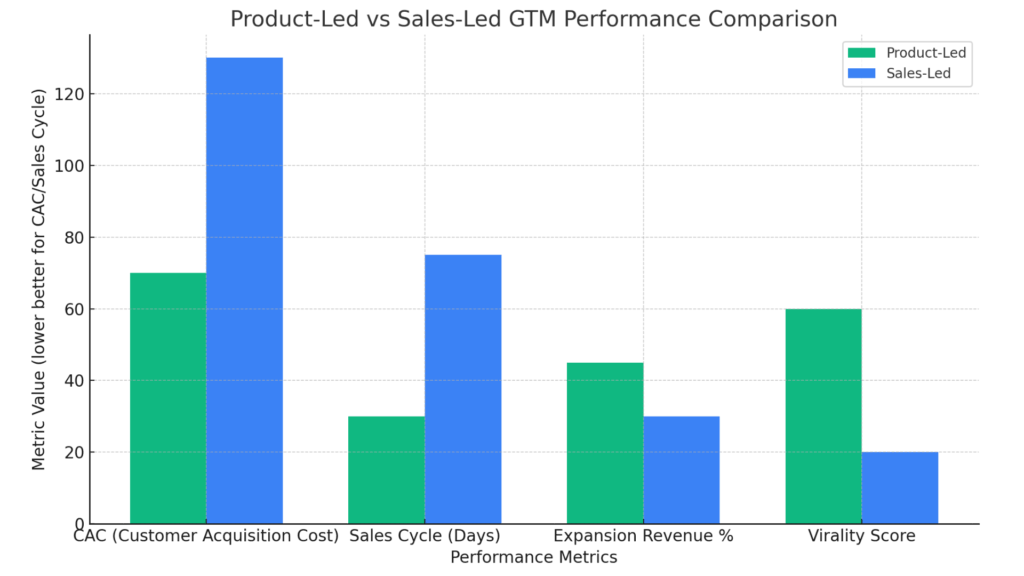Let’s break down decision criteria to help you decide between PLG and SLG.
Product Complexity:
If your product is simple and intuitive, PLG works well. Users can onboard themselves and find value quickly.
If it requires training, customization, or integrations, go SLG. Sales reps can guide buyers through the journey.
Example:
Notion uses PLG because users can build docs, databases, or wikis instantly. On the other hand, Salesforce requires setup, configuration, and stakeholder alignment—perfect for SLG
Average Deal Size (ACV):
PLG shines with low-to-mid ACVs. It’s easier to convert many users with a freemium or low-cost plan.
SLG fits high-ticket sales with multiple decision-makers. If your ACV is above $20,000, SLG is more sustainable.
Example:
Calendly uses PLG to attract thousands of users at low price points. Workday uses SLG to close multimillion-dollar HR software contracts.
Sales Cycle Length:
PLG is ideal when sales cycles are short. It speeds up adoption and reduces decision friction.
SLG handles longer, multi-month sales cycles better. It adds personal touch and tailored demos.
Example:
Zoom launched with PLG but added SLG as it targeted enterprise clients. This hybrid approach helps scale fast while handling large accounts.
Target Audience:
PLG appeals to individuals, SMBs, and tech-savvy users. These users prefer quick setups and don’t want to talk to sales.
SLG is better for enterprise buyers, finance teams, or legal-heavy industries. These buyers expect consultation and proposal walkthroughs.
Example:
Miro uses PLG to reach designers and teams organically. SAP, however, targets CIOs and CFOs via direct sales.



